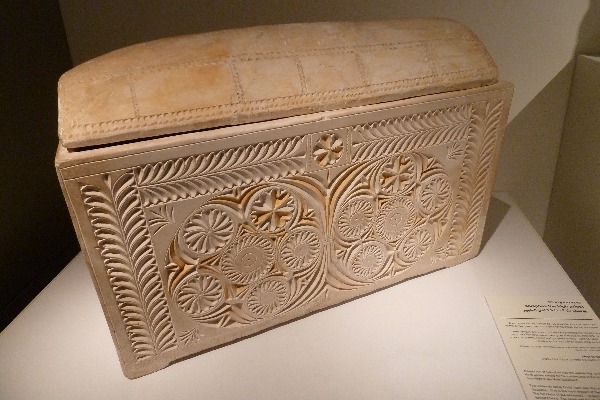Five fascinating artifacts from the time of Jesus on display in Israeli museums

Israel is a mosaic of ancient history and religious significance. Among its many treasures, the artifacts from the time of Jesus found by archaeologists stand out as profound links to a transformative era.
The relics, scattered across Israeli museums, offer us glimpses into the daily lives, religious practices, and historical figures mentioned in the Bible.
As we delve into these remarkable finds, we can draw connections not only to the historical context of Jesus' life but also to authentic physical remnants of his time.

The "Jesus Boat"
Among these compelling artifacts is the Ancient Galilee Boat, often referred to as the "Jesus Boat." Discovered on the shores of the Sea of Galilee by two brothers of Kibbutz Ginossar in 1986, this 2,000-year-old wooden vessel offers a tangible link to the world in which Jesus lived and performed miracles.
While there's no direct evidence connecting this boat to Jesus, its design reflects the type of boat used by fishermen in the region, resonating with Gospel accounts of Jesus calling his disciples and preaching by the sea. The coins, pottery and even the building technique of the boat all are dated to the 50 first years of the 1st century A.D., which redirects us to the exact timeframe of Jesus' ministry on earth.
This ancient boat is today on display at the "Jesus Boat" museum, at the Yigal Allon Center on Kibbutz Ginossar.
The Pontius Pilate Inscription
Equally significant is the Pontius Pilate Inscription, a limestone block unearthed in 1961 at Caesarea Maritima. Bearing the inscription "Pontius Pilate, Prefect of Judea," this artifact provides direct evidence of the Roman governor who, according to the New Testament, sentenced Jesus to crucifixion.

The inscription is one of the earliest surviving records of Pontius Pilate discovered through archaeology, and one of only two contemporary artifacts, the other being Pilate's ring found at Herodium. Apart from these, he is known solely from written sources. The artifact is now on display at the Israel Museum in Jerusalem.
The Caiaphas Ossuary
The Caiaphas Ossuary, another remarkable find, is a beautifully crafted limestone burial box dating back to the 1st century.
It was discovered in southern Jerusalem in 1990 and is believed to have contained the remains of Caiaphas, the high priest who played a central role in Jesus’ trial. The ossuary bears the inscription "Joseph, son of Caiaphas."

This artifact provides insight into the burial customs of the Jewish elite during the Second Temple period and corresponds directly to New Testament accounts of Jesus' trial and condemnation.
Herod's sarcophagus
Alongside these personal artifacts connected to individuals, the sarcophagus of Herod the Great provides a remarkable insight into the life of one of the most influential figures from the time of Jesus.

Excavated from King Herod's Tomb at Herodium, this intricately decorated sarcophagus reveals the opulence and architectural sophistication of Herod’s reign.
Now on display at the Israel Museum, it provides context for the political and architectural backdrop against which Jesus' life unfolded, highlighting the dramatic changes in Judean governance during that period.
The sarcophagus, crafted from a fine reddish limestone and adorned with intricate floral carvings, was discovered shattered into numerous small pieces. This destruction underscores the deep hatred many Jews felt toward Herod, and likely means his tomb was vandalized during the Great Jewish Revolt against the Romans, which began in 66 A.D.
The Heel Bone with a Nail
One of the most sobering artifacts from the time of Jesus is a heel bone with an iron nail still embedded in it. This artifact, discovered in a first-century tomb in Jerusalem, is the only physical evidence of Roman crucifixion found in the region. The nail, which was driven through the heel bone, provides a chilling insight into the brutal method of execution used by the Romans during Jesus' time. While the individual to whom the bone belonged is unknown, the artifact serves as a poignant reminder of the crucifixion of Jesus and the suffering he endured.

These five artifacts, housed in Israeli museums, do more than offer historical insights - they bridge the ancient world revealed by archaeology with the Bible and offer a tangible connection to the time of Jesus.
From the boats that sailed the Sea of Galilee, the inscriptions documenting Roman governance, to ancient ossuaries, a heel bone with an iron nail and sarcophagi of biblical figures, these relics bring vividly to life the historical world of Jesus living on earth.
On your next visit to Israel, don't miss the profound and powerful experience of rediscovering these artifacts at the Israel Museum and the Yigal Allon Center.

The All Israel News Staff is a team of journalists in Israel.
You might also like to read this:















